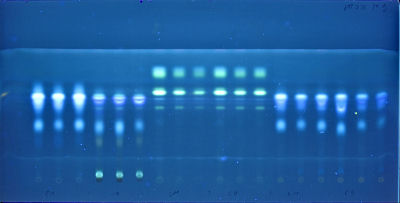|
Strona archiwalna!
Ta strona zawiera treści archiwalne, które nie były zmieniane po 23 września 2019 r. Jeśli chcesz wiedzieć więcej zapoznaj się z deklaracją dostępności
|
||||||
archiwum
 2006 2006
 2008 2008
 2010 2010
 2012 2012
 2014 2014 |
||||||

| ||||||
 |
 |
|||||

|
||||||
| strona główna założenia regulamin kalendarium wskazówki pobierz jury rejestracja zgłoszone projekty galeria gallery | archiwum kontakt | |||||
Description popularizing the research project Statistics claim that we like the best people with green eyes. Maybe it is so because they are the most rare in the whole human population. Most common are brown eyes. There are corners of the earth where it is the only colour of eyes you will see. Yet nobody seems to be anxious of the fact that every single day hundreds of eyes, green ones, blue ones or brown ones; behold us . It also seems that we are the only or one of few species of the planet that take such a diversity of eye colouration so naturally. Abstract For many years eye-coloured mutant strains were commonly used as a basic model in insect physiology and molecular biology. Published data show that insect pigments (ommochromes and pteridines) are important for eye functionality and visual stimulus reception. Moreover, pigments synthesis pathways are tightly connected with metabolism of key neurotransmitters (serotonin and dopamine). In 2015 at the Department of Animal Physiology and Ecotoxicology (Faculty of Biology and Environment Protection, University of Silesia) two strains of eye-coloured mutants were isolated - a yellow one and a white one of house crickets (Acheta do-mesticus). There is no data on a similar mutation in house cricket, also there is lack of data about behavioural effect of this kind mutation in hemimetabolic insects. In the research we were using thin layer chromatography (TLC) and spectrophotometric measurements. We demon-strated that insects from yellow strain have no basic ommochromes while white strain has no secondary ommochromes and some pteridine.
|


|
|||||












